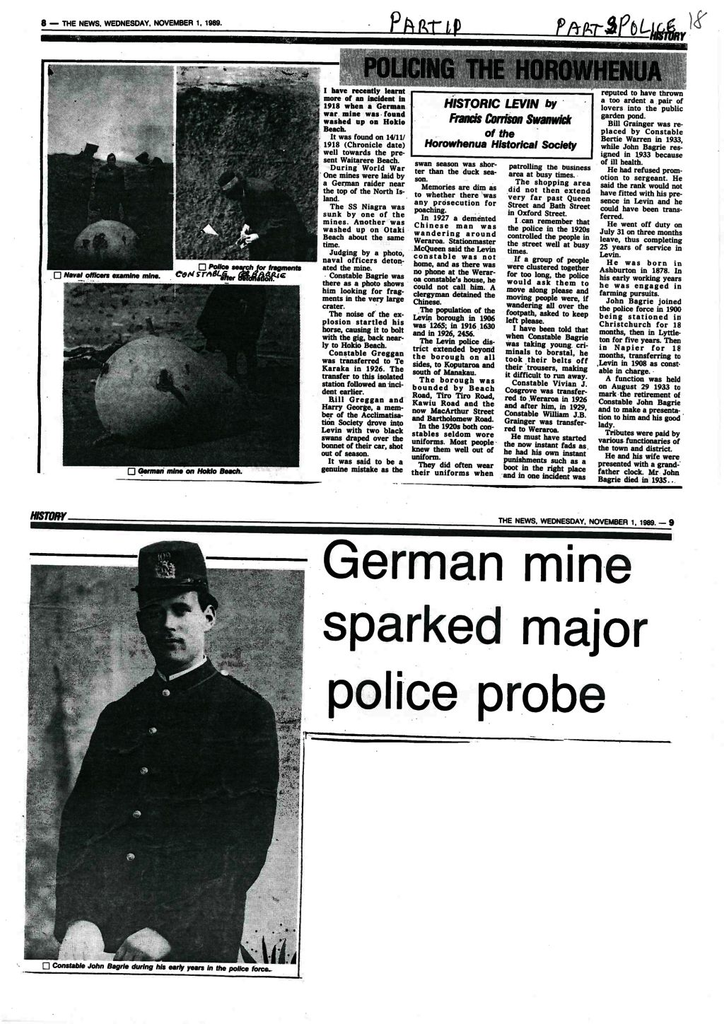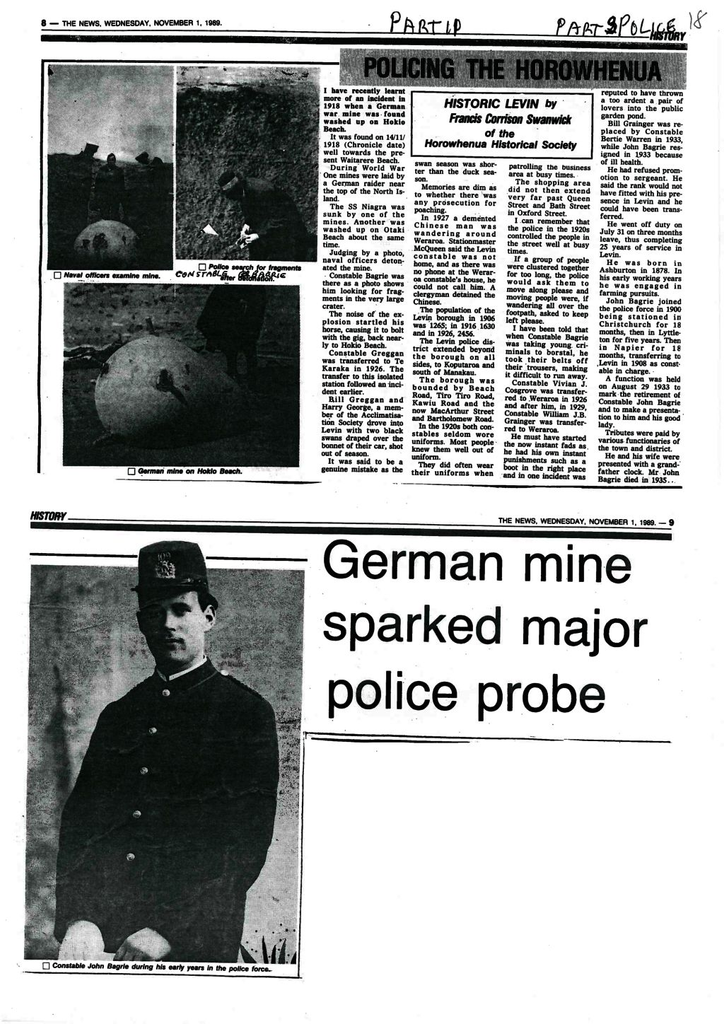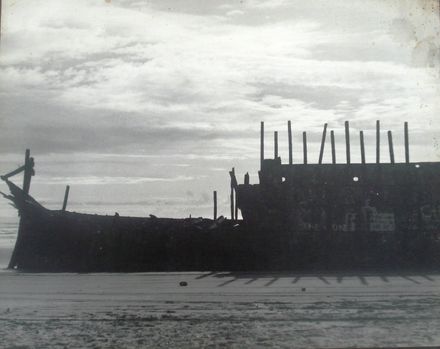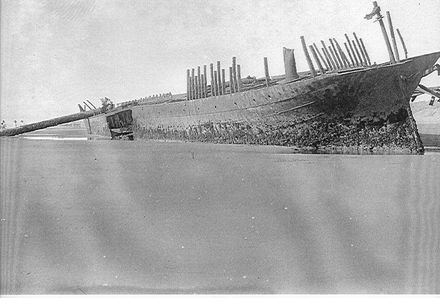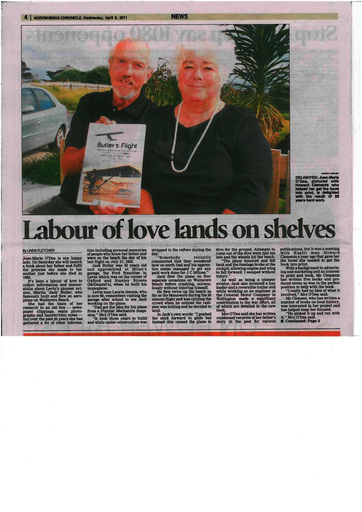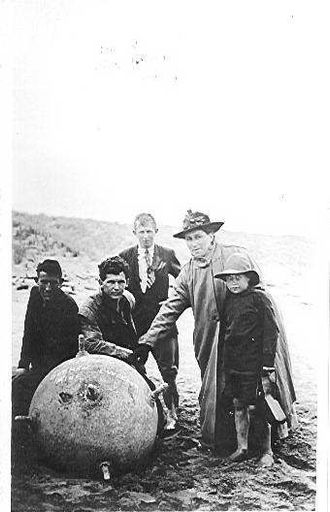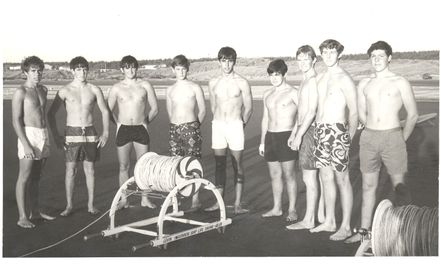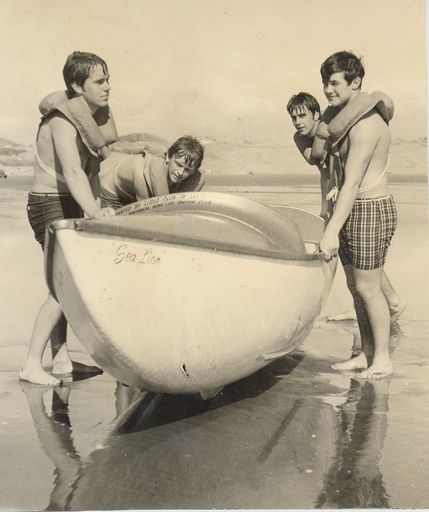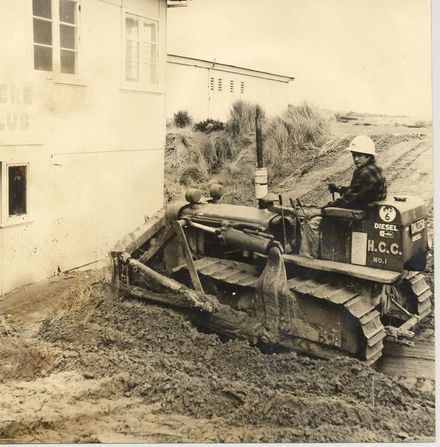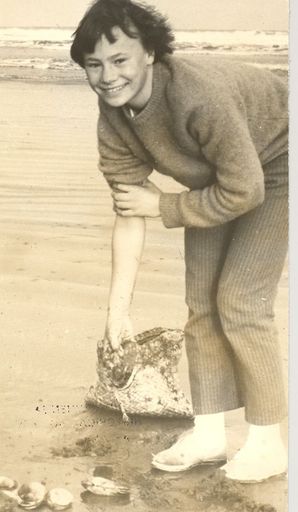Policing the Horowhenua
- Description
This text that follows is the content of the attached PDF.
I have recently learnt more of an incident in 1918 when a German war mine was found washed up on Hokio Beach. Photo at left shows naval officers examining the mine.
It was found on 14/11/1918(Chronicle date) well towards the present Waitarere Beach.
During World War One mines were laid by a German raider near the top of the North Island.The SS Niagra was sunk by one of the mines. Another was washed up on Otaki Beach about the same time.
Judging by a photo (above), naval officers detonated the mine.
Constable Bagrie was there as a photo (left) shows him looking for fragments in the very large crater.
The noise of the explosion startled his horse, causing it to bolt with the gig, back nearly to Hokio Beach.
Constable Greggan was transferred to Te Karaka in 1926. The transfer to this isolated station followed an incident earlier. Bill Greggan and Harry George, a member of the Acclimatisation Society drove into Levin with two black swans draped over the bonnet of their car, shot out of season. It was said to be a genuine mistake as the swan season was shorter than the duck season.
Memories are dim as to whether there was any prosecution for poaching.
In 1927 a demented Chinese man was wandering around Weraroa. Stationmaster McQueen said the Levin constable was not home, and as there was no phone at the Weraroa constable’s house, he could not call him. A clergyman detained the Chinese.
The population of the Levin Borough in 1906 was 1265; in 1916, 1630 and 1926, 2456.
The Levin police district extended beyond the borough on all sides, to Koputaroa and south of Manakau.
The borough was bounded by Beach Road, Tiro Tiro Road, Kawiu Road and the now Macarthur Street and Bartholomew Road.
In the 1920s both constables seldom wore uniforms. Most people knew them well out of uniform. They did often wear their uniforms when patrolling the business area at busy times.
The shopping area did not then extend very far past Queen Street and Bath Street in Oxford Street.
I can remember that the police in the 1920s controlled the people in the street well at busy times. If a group of people were clustered together for too long, the police would ask them to move along please and moving people were, if wandering all over the footpath, asked to keep left please.
I have been told that when Constable Bagrie was taking young criminals to borstal, he took their belts off their trousers, making it difficult to run away.
Constable Vivian J. Cosgrove was transferred to Weraroa in 1926 and after him, in 1929, Constable William J.B. Grainger was transferred to Weraroa.
He must have started the now instant fads as he had his own instant punishments such as a boot in the right place and in one incident was reputed to have thrown a too ardent a pair of lovers into the public garden pond.
Bill Grainger was replaced by Constable Bertie Warren in 1933, while John Bagrie resigned in 1933 because of ill health.
He had refused promotion to sergeant. He said the rank would not have fitted with his presence in Levin and he could have been transferred. He went off duty on July 31 on three months leave, thus completing 25 years of service in Levin. He was born in Ashburton in 1878. In his early working years he was engaged in farming pursuits.
 John Bagrie joined the police force in 1900 being stationed in Christchurch for 18 months, then in Lyttleton for five years. Then in Napier for 18 months, transferring to Levin in 1908 as constable in charge.
John Bagrie joined the police force in 1900 being stationed in Christchurch for 18 months, then in Lyttleton for five years. Then in Napier for 18 months, transferring to Levin in 1908 as constable in charge. Photo at left shows Constable John bagrie during his early years in the police force.
A function was held on August 29 1933 to mark the retirement of Constable John Bagrie and to make a presentation to him and his good lady. Tributes were paid by various functionaries of the town and district. He and his wife were presented with a grandfather clock. Mr John Bagrie died in 1935.
Identification
- Date
- November 1, 1989
Taxonomy
- Community Tags

